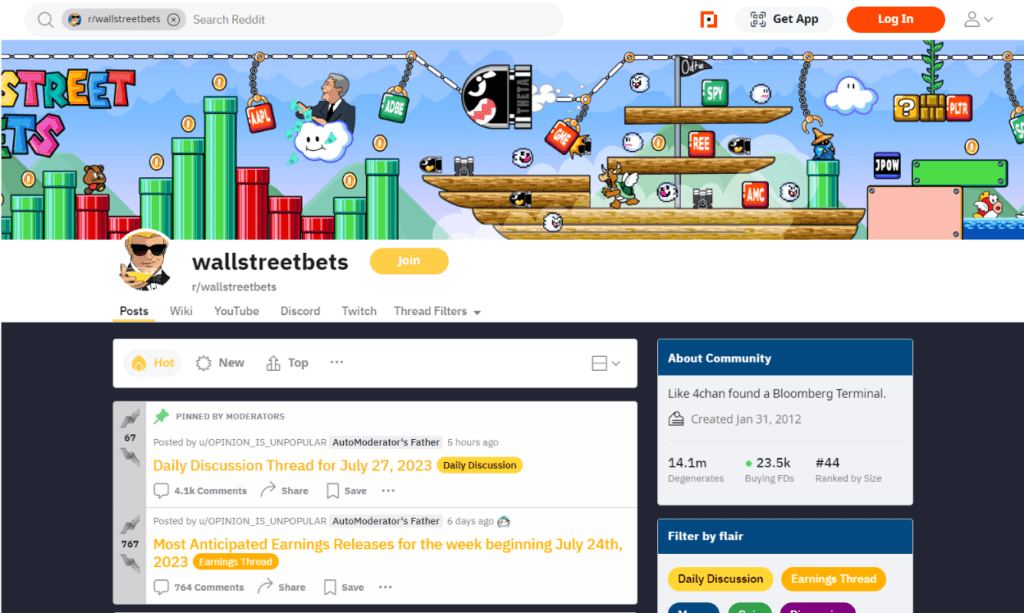Last Updated on April 12, 2024
Being a part of a trading community can be a potent tool for both novice and seasoned traders alike. It facilitates the sharing of strategies and market insights, as well as promotes collective growth.
However, building a successful trading community comes with its challenges and demands careful planning and efficient community management.
In this article, you’ll discover how to build a trading community, the value it can deliver, and how to overcome potential hurdles along the way.
What is a Trading Community?
A trading community is a group of individuals who share a common interest in trading, be that stocks, cryptocurrencies, commodities, or other types of assets. Members unite to share trading strategies, pose questions, and discuss market trends, as well as support one another in their trading endeavors.
These communities typically exist on various online platforms, providing a virtual space for traders to connect and engage.
One of the most renowned trading communities is on Reddit, specifically the subreddit r/wallstreetbets. Composed of millions of individual traders, this group has made headlines for their discussions and collective actions that have gone as far as having a substantial impact on the stock market.

Other prominent examples of subreddits that serve as trading communities include r/Forex, r/StockMarket, and r/CryptoCurrency.
Beyond Reddit, other social media platforms like Facebook, Discord, and Telegram host numerous trading communities where members can participate in real-time discussions about trading. These communities often organize themselves around specific trading styles or types of assets.
In addition to these expansive communities, there are also smaller, niche trading communities led by single individuals or organizations. An example of this would be the trading community, directed by Timothy Sykes. It offers courses, webinars, and a chatroom for members to discuss trading-related topics.
What Value Can a Trading Community Have?
Building and maintaining a trading community can deliver immense value to its members in several ways. Some notable benefits include:
Shared Knowledge and Experience
Trading communities serve as platforms for sharing knowledge and experience. Members can disseminate their experiences and trading strategies, enabling others to learn from their successes and failures. Novice traders can profit from the expertise of more seasoned traders, while veteran traders can refine their skills by interacting with fresh perspectives.
Support and Encouragement
Being a trader can often be a lonely endeavor. But if you’re just starting, you could certainly benefit from the support and encouragement of like-minded individuals in a trading community. This sense of togetherness can bolster your confidence and aid you in navigating the inevitable ups and downs of trading.
Building Authority and Credibility
Active participation in a trading community can assist you in building authority and credibility within the group. By consistently providing valuable insights and contributing positively to discussions, you eventually earn recognition as a valuable contributor. This can enhance your reputation and open up networking opportunities within the community and the broader trading world.
Real-Time Market Insights
The collective intelligence of a trading community can be a valuable source of real-time market insights. Members can share breaking news, technical analysis, and emerging trends, aiding others to stay informed and make well-informed trading decisions.
Monetization Opportunities
For community leaders or established traders, a trading community can serve as a platform for monetization. They might offer premium content, such as in-depth analyses or training courses, to members for a fee. Alternatively, they could utilize the community platform to promote trading-related products or services.
How to Build a Trading Community
Now that you are aware of the value a trading community creates let’s go over the key steps to successfully build one:
Defining the Community’s Purpose, Mission, and Vision
Purpose, mission, and vision establish the foundation for your trading community, as well as steer the course for the community’s growth and sustainability. Defining these elements is also crucial in shaping the community’s identity and attracting like-minded individuals. Here’s how to go about it:
- Purpose — this is the fundamental reason why your trading community exists. It could be to educate beginner traders, engage the audience, share advanced strategies for seasoned traders, or discuss a specific trading niche. Regardless, the purpose guides the activities within the community, ensuring they deliver value to members.
- Mission — this is the tangible embodiment of your community’s purpose. For instance, if the purpose is to educate beginner traders, your mission might be to teach 100,000 people how to become better traders by providing high-quality educational content and a supportive platform for questions and discussions.
- Vision — the community’s vision outlines its desired future state. How far do you intend to take the community idea? What are the long-term goals? How do you envision the community growing and evolving over time? Essentially, the vision provides a common goal and clear direction for the community to work towards.
Building the Community
Creating a thriving trading community involves meticulous planning and organization to establish an engaging platform. Key steps to consider include:
- Selecting a platform — the platform you choose can considerably influence the growth and engagement of your trading community. Platforms like Reddit, Discord, Facebook Groups, or even a dedicated website may be perfect depending on your audience’s preferences and the features required for seamless interactions.
- Establishing processes — this involves things like defining the process for joining the community, accessing resources, participating in discussions, and so on. You’ll want to prioritize a user-friendly sign-up process so people don’t have to jump through hoops just to become members.
- Marketing — this outlines how you’ll reach your target audience, whether that’s through social media, paid ads, email campaigns, SEO, or other methods.
- Organizing community management — this involves setting clear community rules and guidelines, moderating discussions to maintain a respectful atmosphere, and addressing any conflicts or issues that arise.
Remember, building a trading community is an iterative process. You’ll likely need to adjust your strategies as the community grows and evolves.
Creating Value-Driven Content
The heart of any thriving trading community lies in its content — the value you will provide to the members. Value-driven content not only retains current members but also attracts new ones. The principles of creating insightful content for your community include the following:
- High-quality — the content must be accurate and well-researched. High-quality content is a reflection of the community’s authority and credibility in the trading realm.
- Targeted — the content should cater to the needs and interests of your community members. For instance, if your community primarily consists of futures traders, tailor your content accordingly.
- Diverse — keep the content diverse so it appeals to different members. For instance, webinars and videos might appeal to visual learners, while members who like to learn at their own pace might prefer articles and newsletters. Discussions and Q&A sessions are also great for keeping members engaged.
- Member-generated — it’s important to encourage members to share their insights and ask questions. Regular meetups, forum discussions, or guest posts can be great ways to foster engagement and allow members to learn from each other. This also makes the community more interactive and collaborative.
Promoting Engagement and Retaining Members
Promoting engagement and retaining members requires fostering an open and inclusive environment where everyone feels valued and motivated to actively participate. Here’s how to achieve this:
- Encourage constructive discussions — open and respectful discussions are the lifeblood of a trading community. Encourage members to share knowledge and debate ideas. Highlight the importance of constructive feedback and respect for differing opinions.
- Celebrate member achievements — acknowledging member achievements and milestones fosters a sense of community and unity. Whether it’s a successful trade, an insightful contribution, or a membership anniversary, celebrating these moments makes members feel valued and recognized.
- Promote diversity of ideas — encourage members to share diverse trading strategies and perspectives. Emphasize that every member’s contribution is valuable, regardless of their experience level.
- Ensure member satisfaction — regularly check in with your members to gauge their satisfaction. Are they finding value in the community? Are there things you can improve? Implement feedback mechanisms such as surveys, polls, or open discussions to gather insights from the community.
- Foster mentorship and networking — facilitate mentorship opportunities where experienced traders can help newcomers, fostering a supportive learning environment. Encourage networking and collaboration among members to build connections and partnerships.
Challenges Towards Building a Trading Community
While creating a trading community can be rewarding, it is not without its challenges. Here are some potential obstacles:
1. Time Investment
Creating a successful community is a process that takes a lot of time. It demands consistent effort in crafting valuable content, fostering engagement, and addressing member needs. Balancing these demands can be a challenge, especially if you’re managing the community on top of other responsibilities.
2. Team Management
As your trading community expands, you may need to form a team to manage different aspects of the process. Finding individuals who share your vision and can effectively engage with your members is crucial, yet not always seamless.
3. Ensuring Quality and Reliability
Ensuring the accuracy and credibility of both the content you provide and the information shared by members is often challenging. You will often have to fact-check information, moderate discussions, and continually educate members about responsible information sharing.
4. Managing Conflicts
As the community expands, disagreements and conflicts will likely surface among members. You’ll need to devise an effective way to manage these conflicts and maintain a respectful environment to prevent toxicity and ensure constructive discussions.
Conclusion
Building and maintaining a successful trading community requires a strategic and value-driven approach. The essence of such a project lies in providing value-driven content that educates and engages members. Despite the challenges, the shared learning and camaraderie make building a trading community a rewarding endeavor.
